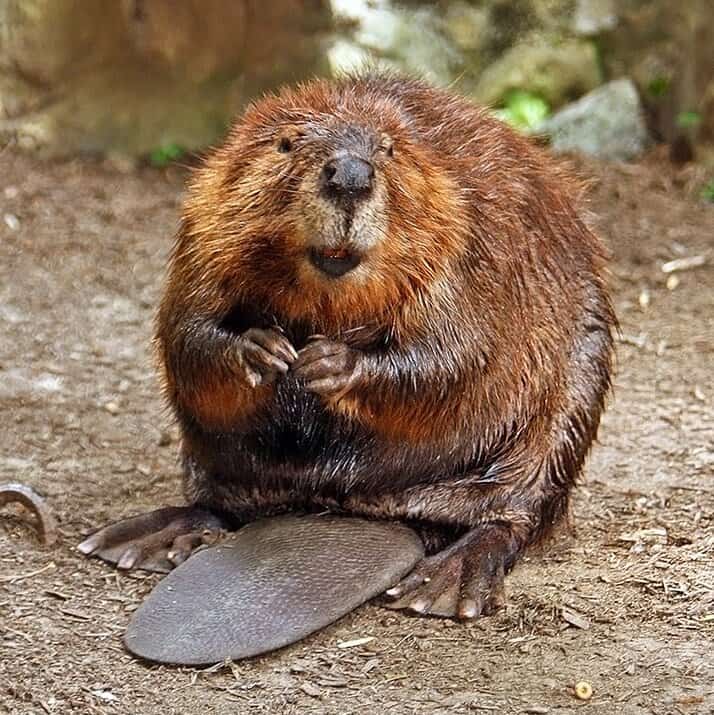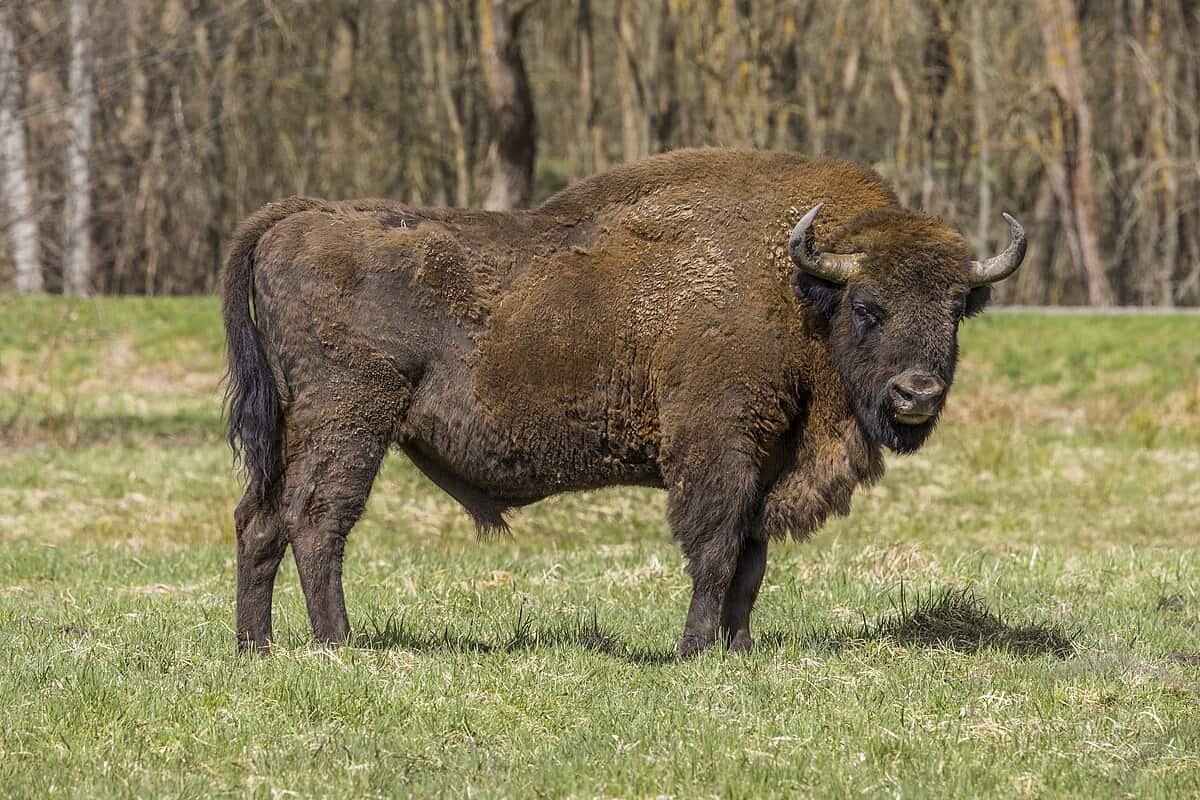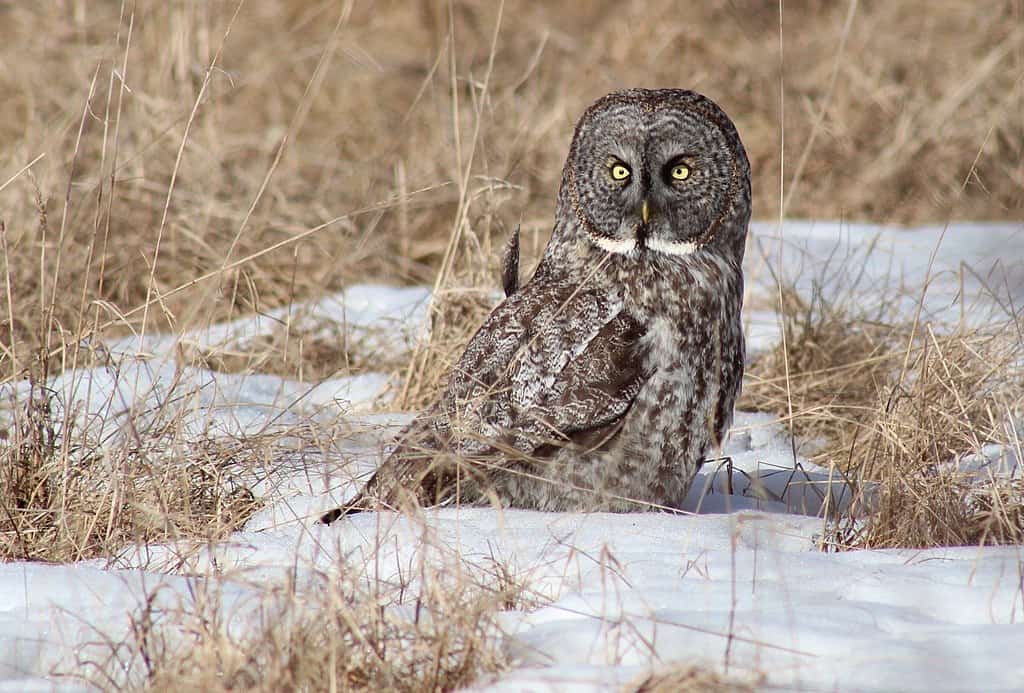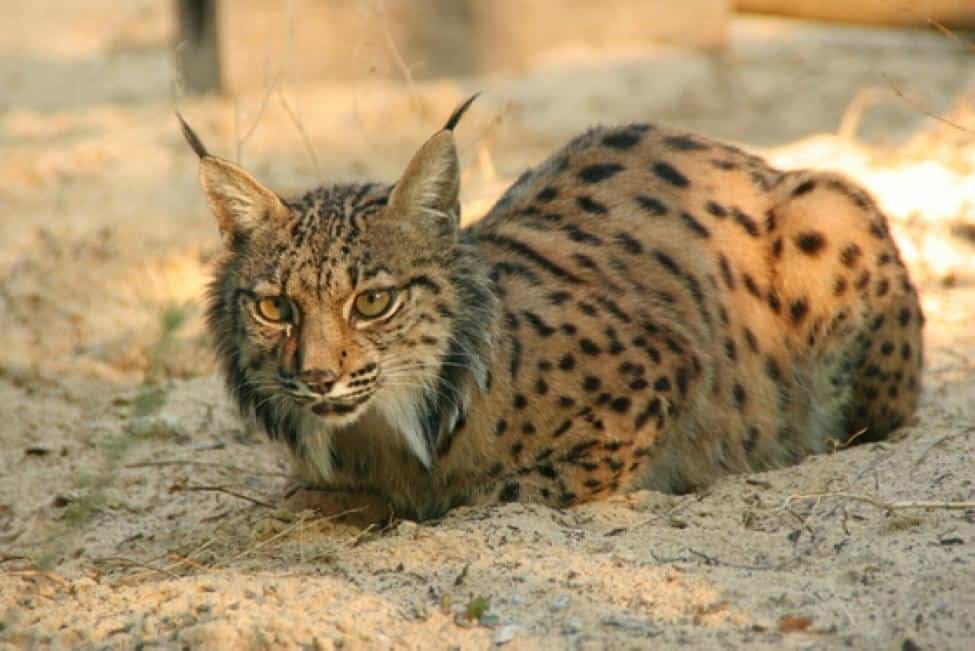Welcome to Animals and Wildlife in Manitoba.
In Manitoba, Canada, one can find many animals like different birds, mammals, reptiles, rodents, etc., due to its enormous diversity of wild animals; Manitoba plays a vital role in managing the ecosystem. There are various parklands in Manitoba, boreal forests, and tundra regions.
Approximately 89 species of mammals live in Manitoba ecosystems; apart from mammals, there is a large number of reptiles, wolves, foxes, and birds.
The polar bear is the top animal in Manitoba wildlife. Still, different other animals are found in this region and have a point of attraction for visitors and tourists.
During the summer, several beluga whales can be found near Hudson Bay and seen close to beluga swimming. Apart from the polar bear and beluga whales, there are two national parts and 92 provincial parks, known as home to black bears, wolves, moose, several birds, beavers, etc.
Click below to jump to any of the various animals in Manitoba:
Polar Bear

Polar Bears are one of the top animals found in Manitoba, which is the main point of attraction for tourists and visitors. Churchill is used to seeing Polar bears during his trips, and polar bear safaris have been done during autumn. As in the autumn season, they are not actively hunting for food and can be easily spotted during the safari time.
Polar bears are marine mammals that spend most of their time (months) at sea. These are considered mighty mammals because of their large limbs and big feet, allowing travel, coverings, running, and running land.
They are predatory bear family members, and they usually eat seals and push hispid. Polar bears generally hunt for seals near the arctic region as the arctic region is considered the home for seals; seals generally live near these regions; live on the surface of ice holes; when they come out of the wholes to breathe, polar bears catch them for their food. So basically, polar bears hunt on ice and water. They don’t like hunting for food on land or in open water.
Places to find Polar Bears in Manitoba
Generally, polar bears are found in July to November as they come across the seashores because the ice starts to melt in summer. So from July to November, tourists and visitors can easily see polar bears near the coast and other animals in Manitoba.
Polar bears are found in Assiniboine Park Zoo, where Journey to Churchill is famous; Churchill is a vehicle used for polar bear safari. With this, one can see polar bear swimming and underwater views of opposite bear living.
Beluga Whale

Beluga whales are the second most attractive animal found in the Manitoba region. They are very social and can easily approach humans while passing through the water, and they are very friendly mammals who are curious, playful, and intelligent.
They can whistle songs, chirp, and even sometimes mimic human sounds. Talking about the life of beluga whales, they generally prefer to travel in groups like humans, around a group of ten whales, or even a hundred or thousand in the summer season.
They have a gestation period of approx. Fourteen months so they generally breed in the spring season and take a year for babies and a half during the late summer season. In the mid of June month, they start migrating, so this is the best time to see them. They generally eat all aquatic animals like octopuses, crabs, snails, squids, shrimps, etc., and can eat fists.
Places to find Beluga Whales in Manitoba
Beluga whales are generally found at Churchill river from June to September month. Around this period, 3000 whales visited Churchill river, and approx. Sixty thousand whales come to Hudson Bay during these months, so visitors and tourists can easily spot beluga whales in these months.
Apart from these, they can be found with Beluga Whale Dream Tour or Ultimate Artic Summer Adventure. They can also be found in northern rivers like the Seal River as they find warm water in this river.
Beaver

Beavers are among the most common animals in the Manitoba region or every part of Canada. In earlier days, people used to trade for the inner fur of beaver, but now a day, such trades are banned.
People used to create hats using beaver fur as they are perfect in quality. Beavers can swim in water; they have long tails, which help them swim. When they find any danger, they use their seat to slap in water and warn other family members.
They have large teeth, which help them chew wood under the water; no water will enter their mouths when they chew food. Their teeth can wear down when they use them for cutting wood, but they never stop growing. Beavers live in dams in water and use wood to make them. They generally made these dams near the river or streams or where they find some water. They live with their families in dams, protecting them from predators found amongst animals in Manitoba.
Places to find Beavers in Manitoba
Beavers can be found near any lake, river, pond, or where there is water. So there is no specific place or park where one can discover beavers as they are located very commonly in Manitoba and easily situated near Churchill River and Seal River.
Arctic Fox

Arctic foxes are small but look similar to large cats, and they are one of the smallest wild canid species in Manitoba. They are approx and 75-115 cm long in size, and they seem to be extended due to their long bushy tail.
Arctic foxes are grey or brown with a yellow belly during the summer season, and their fur becomes white during the winter season. This color change supports them as it’s challenging for other animals to determine them, and they are safe from the hunt. This is not the only thing; because of their short legs, small round ears help fight the cold in the winter as the significant part is covered with fur, which may lead to heat loss.
Arctic foxes hunt for their food or can live on dead animals (scavengers). They use their sense of smell to find food in the snow or other areas. They can bear temperatures up to -50 degrees Celsius, and their body structure helps them keep warm.
Places to find Arctic Foxes in Manitoba
Arctic foxes are found in Ellesmere Island, the north region. They are located near the northern parts of the Arctic in Manitoba, Canada, and they are generally seen where seals and polar bears are, among other animals in Manitoba.
Bison

Bison is one of the largest mammals found in Manitoba. Bison play a very vital role in the history of Manitoba, and they are shields on the Manitoba Coat of Arms, their province flag. In earlier times, people of North America used Bison to sustain their livelihoods like food, fur trade, clothing, and fuel.
Generally, two species of Bison are found in Manitoba; one is plain Bison with shaggy capes and big heads. Another one is wood bison; those have humps, shoulders, and triangular heads. They are around 7725kg in weight (approx. 2000 pounds), and they can run fast with a speed of 55km per hour. Talking about their life span, they can live up to 20 years.
Plain bison and wood bison both eat grass and sedges. Plan bison mainly eat grass during all seasons (summers and winters), and wood bison has a different diet. Like. They can eat lichen, wood, and even sedges food in winter. Both species mainly eat grass in their diet, and their broad front teeth help them in the grass. Like other ruminant animals, they also have four divisions of the stomach which allow them to digest their food.
Places to find Bison in Manitoba
Bison found in Riding Mountain National Park. This park is one of the famous spots for bison animals in Manitoba, and they can also be found in a core range of central North America.
During calving season, FortWhyte organizes a one-hour bison safari in the minibus of visitors and tourists. FromThey can be found more in these regions from July to mid of September.
Red-Sided Garter Snake

In Manitoba, there are around five species of snakes, but this red-sided garter snake is one of the most attractive snakes in this region. This snake is found in the Manitoba Interlake region.
They usually live in dens and are made in trees, under trees, stones, rocks, shale cliffs, etc. Approximately 10000 snakes can live in a single hole, and around 5000 snakes can live in 5 holes in the winter. There are four destructions that can cause damage to snakes, chemical pollution, changes by humans in habitats like making buildings, cutting off trees, commercial trade, and any form of natural disaster. Female snakes are more significant than male snakes.
Every snake whose length is 90 cm is considered a female snake,ke, and the male snake can reach up to 75 cm in height. The age span of snakes is approximately ten years and can be up to 12 years, but the chances are significantly less; there may be only one snake out of 5000 who can live up to 12 years.
Places to Red-Sided Garter Snakes in Manitoba
These snakes are found in Manitoba’s southern and central regions and on the east side of Lake Winnipeg. Along with the creeks and rivers side of Manitoba, one can find many snake dens. They are also found in the northernmost region near Flin Flon. They can be seen in May or the end of September and mostly be viewed on sunny days.
Grey Owl

They are number six among the fifty most wanted birds on the continent. They can be found more commonly in Manitoba. Grey owls are named “The Great Grey Owl” by the Provincial Bird Emblem. They are big, bold, and beautiful, becoming the main attraction for visitors. Both female and male owl looks similar, but females are more significant than males. The male grey owl weighs 1.2kg, and the female grey owl weighs 1.8kg.
They can be recognized from their bright yellow color eyes, no ears, round faces, and white chin patches. They mainly feed on small mammals like shrews, voles, and mice. They like to eat more voles, leading to fewer voles in Manitoba. Grey owl often moves 700km from the north to the northeast region and returns after 2-3 years of span once the population of voles increases.
Places to find Grey Owl in Manitoba
They are found in mixed woods and forests of the Manitoba region and are mainly located in the southeast and Riding Mountain Nation Park to treeline in Manitoba. In winter, when they find food, it’s majorly seen near the roadsides in meadows, as hungry owls are fearless of humans.
Moose

Moose are vital to Manitoba’s wildlife environment and are known as the deer family’s most prominent members. Now a day’s moose population is decreasing daily in the Manitoba region, due to which two programs have been established with the help of Manitoba Agriculture and Resource Development.
These two programs continuously monitor the effects of the sudden decrease in the moose population in Manitoba and find the reason behind that. They have long, skinny legs and are excellent swimmers; a newborn moose can easily swim within a few days from birth. They are fond of living near fresh water and generally love to eat a vegetation diet. Moose have excellent smelling senses as well as hearing capacity. However, they do not have good eyesight.
Places to find Moose in Manitoba
They are found in the south range of Manitoba from the US border to the Nunavut Territory in the north. Sometimes they can also see in the southern region of Manitoba. But now, significant moose populations have shifted to Pembina and Souris River valleys.
Lynx

Lynx are categorized as wild cats found in the various regions of Alaska, Canada, and north part of the USA. They have long, dense fur, triangular ears, and wide snow paws, and their rear limbs are more extended than their forelimbs.
They are 48-56cm tall from the shoulder and weigh from 5 to 17 kg. The male lynx weighs 6-17 kg, and the female lynx weighs 5-12 kg. They have very flexible bodies and are excellent swimmers. Lynx have very sharp paws, which help them climb trees and fight to hunt.
Lynx majorly eats hares, known as snowshoe hares, which affects the rise and fall of the hare population. They mainly hunt at night time as night hares are more active. They mate from March to April, a long formatting period. And after a gestation of two to three months, they deliver about one to eight baby lynxes.
Places to find Lynx in Manitoba
They are found in the Boreal Forest region from north to east in Manitoba.
Porcupine

Porcupines are small rodents with sharp quills coat on their back, which helps them fight against other animals, but usually, they run away when some other animal attacks them or climbs on a tree. They weigh up to 18kg and can be 103 cm long with a 30 cm long tail.
The sharp, quills coats of the porcupine are large strands of hair that grow and will regrow if one loses. Their quills can be easily detached if someone touches them, but they don’t separate them. Sometimes they use their sharp quills to attack attackers by shaking their bodies.
The sharp ends of quills proliferate due to body heat, making them very hard to remove. So most of the time, when predators attack porcupines, these sharp quills hit the front face of attackers, like the mouth, nose, or even eyes. A porcupine generally lives in caves, dead logs of trees, trees, and rocks. They eat shrubs and trees and like food that tastes salty. They mostly live in the forest and shrubby areas and prefer to live alongside rivers. They can easily climb trees.
Places to find Porcupines in Manitoba
Porcupines can be found in the Boreal Forest region and near rivers or dense shrubby forest areas.
Summary of Animals in Manitoba
There are approximately 89 species of mammals living in Manitoba’s ecosystem. Apart from mammals, there are many reptiles, wolves, foxes, and birds. The polar bear is the top animal in Manitoba wildlife. Still, other animals are found in this region and are attractive to visitors and tourists.
The polar bear safari is one of the famous spots to visit. And the second most renowned animal found in Manitoba is the Beluga whale in the Hudson Bay River. There are around 92 provincial parks in Manitoba regions and two national parks, Riding Mountain National Park and Wapusk National Park. Apart from the polar bears and belugas whales, Manitoba is home to Bison, black bears, hundreds of bird species, caribou, wolves, and foxes.
If you enjoyed reading about the animals in Manitoba, check out animals in Texas and Alberta next!
Join our Forum for free today!

- These are The 5 Largest Great White Sharks Ever Recorded - July 19, 2024
- The Surprising Benefits of Big Game Hunting - July 18, 2024
- $100k+ Hunting Experiences The Most Expensive Animals to Pursue - July 17, 2024


